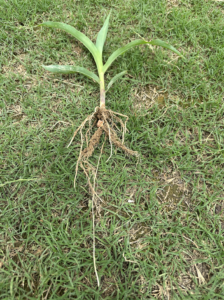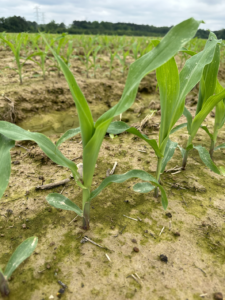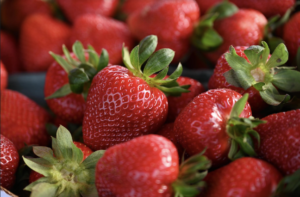“Your rows sure are straight.” Those may have been the most pride-filling words I ever heard. They were first spoken to me by one of my landlords, Orville Larson, the spring after my dad passed away and all farming operations fell entirely on me. Orville made a habit of driving out to his farm to see how things looked. He stopped in to see me the day he checked on his crops, and those were the first words he spoke. That same day, I received the same compliment from my dad’s best friend, who was regarded statewide as one of the top farmers in Illinois. That’s when I knew I was a farmer. For a farmer, their field is their canvass, and their planter is their brush. For centuries, farmers took pride in how their rows looked, based on the ruler inside their head and their ability to guide a tractor, horse, or oxen across bumpy terrain. Not all fields are perfect squares. Many are odd shaped, have point rows, and feature waterways, tree lines, buildings, hills and other obstacles that require navigation. And when planting on slopes, you often want to plant along the contours and not straight across. Nowadays, the “art” of farming has been replaced by GPS guidance systems. Farmers enter the field, type in coordinates, engage auto-steer and essentially become a passenger as they stare at a screen while the tractor drives itself. But if those GPS satellites ever go down, who knows, maybe guys like me will get a call from this generation.
Beauty is only soil deep. The corn on my farm is growing rapidly, reaching the V3 stage in just two weeks. As good as the corn looks above ground, it looks even better below ground. Check out the nodal roots. You’ll see one that’s already over nine inches, longer than the plant is tall. This is providing an incredible foundation, a robust nutrient absorption system and data processing center. What do I mean by data processing? Root hairs function as the brains of the plant. These roots are already full of root hairs. Huma Gro® Zap®, Breakout® and Max Pak® at planting have played a huge role in early season growth that, quite honestly, I’ve never seen before.
Last Friday, the first post-emergence application was made to my corn, just as it reached the V3 stage. At this stage, plant structure is being determined; all the leaves and ear shoots are about to be formed inside the plant. The strategy is to spur rapid vigor and further accelerate root growth, fortify the plants prior to the critical V6 stage (when kernel rows are established), and set up plants to potentially produce multiple ears. This tank-mix application included two quarts of Huma Gro® Vitol®, to stimulate hormonal growth activity and boost energy, Crop Guard® to enhance plant health, Max Pak®, Super Nitro®, a custom 4-1-1 blend, and X-Tend®.
May is National Strawberry Month. Americans love this delicious red fruit, consuming 5.5 pounds a year on average. Strawberries are technically self-pollinating, and each flower contains male and female parts. But left to their own devices, many berries will become odd-shaped. So, like ¾ of all flowering plants, they need bees for pollination to optimize their size and appearance. Commercially, 90% of all strawberries are grown in California. Yet the delicious fruit is popular at farmer’s markets around the country. Last week I visited my friend George McDonald’s strawberry farm in Middle Tennessee. They were the most delicious berries I ever tasted. They are pictured below.
Related Posts

Wastewater Wednesday: Swansea in Massachusetts Uses Federal Funding for Sewer Expansion

The Huma Gro Product Quality Assurance Process

BHN’s Fertilgold® Organics Earns OMRI-Listing for 21 Products
Fertilgold® Organics, a brand of organic fertilizer products from Bio Huma Netics, Inc. (BHN) headquartered in Gilbert, Ariz., has achieved Organic Materials Review Institute (OMRI) listing for 21 initial products. Of these, 13 OMRI-listed liquid crop nutrition products are based on the company’s proprietary nutrient carrier, Micro Carbon Technology®, which carries nutrients to plants more





